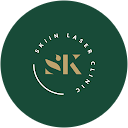
In the realm of aesthetic enhancement, tattoos have long been an expression of individuality and personal narrative. However, as societal trends evolve and personal preferences change, the demand for tattoo removal has surged. As a leading provider of innovative aesthetic laser solutions, we recognise the importance of staying at the forefront of tattoo removal technology to meet the growing needs of your patients.
This article delves into the next generation of professional laser tattoo removal devices, exploring the latest innovations, advancements in safety protocols, and the heightened effectiveness of contemporary methods. Join us as we explore the evolution of laser tattoo removal machines and techniques, from traditional methods to cutting-edge solutions, and discover how these innovations are reshaping the landscape of tattoo removal, offering enhanced results and elevated standards of patient care.
Innovations in Tattoo Removal Technologies
With advances in laser technology and scientific understanding, laser tattoo removal machines and techniques have improved in effectiveness, reduced side effects, and improved patient satisfaction. These next-generation technologies represent a significant leap forward in the field of aesthetic laser surgery, providing you with powerful tools to address the growing demand for safe and effective tattoo removal.
Picosecond Laser
Picosecond lasers, such as the PicoStar, have revolutionised the field of tattoo removal by delivering ultra-short pulses of laser energy in the picosecond (trillionth of a second) range. These rapid pulses create a photomechanical effect that shatters tattoo ink particles into smaller fragments, making them easier for the body to eliminate.
Compared to traditional laser tattoo removal machines, such as a nanosecond or Q-switched laser, picosecond lasers can produce more energy in shorter bursts, resulting in faster clearance of tattoos and reduced risk of thermal damage to surrounding tissues. Additionally, picosecond lasers are more effective at targeting stubborn ink colours, such as blues and greens, which can be challenging to remove with other types of lasers.
Fractional Laser Technology
Fractional laser technology has emerged as another promising approach to tattoo removal. This technique uses a fractionated laser beam to create microscopic channels in the skin, allowing for the selective delivery of laser energy to the tattooed area. By treating only a fraction of the skin at a time, fractional lasers minimise downtime and accelerate the healing process while still achieving significant tattoo clearance.
Additionally, fractional lasers can help improve skin texture and reduce scarring, making them particularly well-suited for treating complex or multicoloured tattoos.
Novel Delivery Systems and Equipment
In addition to advancements in laser technology, there have been innovations in the delivery systems used for tattoo removal treatments. For example, the development of high-powered, portable lasers with ergonomic handpieces allows for greater flexibility and precision during procedures.
Similarly, the integration of advanced cooling systems, such as cryogen spray or air cooling, helps to minimise patient discomfort and protect the skin from thermal injury. These innovations in laser tattoo removal treatment equipment (delivery systems) enhance the overall patient experience and improve treatment outcomes.
Selective Photothermolysis
Selective photothermolysis is a concept that further advances many modern laser-based tattoo removal techniques. It involves selectively targeting the ink particles in the skin without damaging the surrounding tissues. By carefully selecting the wavelength, pulse duration, and energy parameters of the laser, practitioners can precisely match the absorption characteristics of different ink colours, maximising the efficacy of the treatment while minimising the risk of adverse effects. This targeted approach allows for more efficient tattoo removal with fewer treatment sessions and reduced risk of scarring or pigment changes.
Integration of Artificial Intelligence
The integration of artificial intelligence (AI) and machine learning algorithms is also driving innovation in tattoo removal technology and tattoo laser machines. By analysing vast datasets of patient outcomes and treatment parameters, AI can identify patterns and trends that help optimise treatment protocols and predict individual responses to therapy.
This data-driven approach enables practitioners to tailor tattoo removal treatments more effectively, maximising efficacy while minimising the risk of adverse effects. Moreover, AI-powered imaging systems can provide real-time feedback during treatments, allowing for precise targeting of tattoo ink and ensuring consistent results across all skin types and colours.
Safety Considerations in Next-Generation Tattoo Removal
Ensuring patient safety remains essential as next-generation tattoo removal technologies continue to evolve and improve. While these innovative techniques offer greater efficacy and precision compared to traditional methods, practitioners need to adhere to strict safety protocols and guidelines to minimise the risk of adverse effects and optimise patient outcomes.
Laser Safety Protocols
Adhering to laser safety protocols is essential to minimise the risk of adverse effects before, during and after tattoo removal treatments. To maintain up-to-date knowledge of the latest laser technologies and treatment techniques, practitioners should undergo comprehensive laser safety training. Before initiating tattoo removal treatment, practitioners should conduct a thorough pre-treatment assessment to evaluate the patient’s medical history, skin type, tattoo characteristics, and any potential contraindications to treatment.
After undergoing tattoo removal treatment, patients should be provided with detailed post-treatment care instructions to promote optimal healing and minimise the risk of complications. Regular follow-up appointments should be scheduled to monitor the patient’s progress, assess treatment efficacy, and address any concerns or complications that may arise. Practitioners should be vigilant for signs of adverse reactions, such as blistering, crusting, or changes in pigmentation, and take appropriate action to manage these issues effectively.
Adverse Effects and Complications
While next-generation tattoo removal technologies are generally safe and well-tolerated, certain adverse effects and complications may occur, particularly if proper safety protocols are not followed. Common side effects of laser tattoo removal include temporary redness, swelling, blistering, and crusting, which typically resolve within a few days to weeks. However, more serious complications, such as scarring, infection, or pigmentary changes, may occur in rare cases, particularly in patients with underlying risk factors or predisposing conditions.
Regulatory Compliance and Quality Assurance
Practitioners should ensure compliance with regulatory requirements and quality assurance standards governing the use of laser devices for tattoo removal. This includes obtaining appropriate licensure and accreditation, maintaining accurate treatment records, and adhering to manufacturer guidelines for device operation and maintenance.
Regular calibration and quality control checks should be performed on laser equipment to ensure consistent performance and optimal treatment outcomes. Additionally, practitioners should stay informed about updates to regulations and guidelines related to laser safety and incorporate any relevant changes into their practice protocols.
Effectiveness of Next-Generation Tattoo Removal
The development of next-generation tattoo removal technologies represents a significant leap forward in the field, offering unprecedented levels of efficacy and precision compared to traditional methods. These innovative techniques leverage advanced laser technology, scientific principles, and clinical expertise to achieve faster clearance, reduced side effects, and improved cosmetic outcomes for patients seeking tattoo removal.
Success Rates and Patient-Satisfaction
Next-generation tattoo removal technologies have been associated with high success rates and high levels of patient satisfaction. Many patients experience significant improvement or complete removal of their tattoos after undergoing treatment with advanced laser systems. In addition to achieving excellent cosmetic outcomes, patients also report reduced discomfort, shorter treatment times, and faster recovery compared to traditional methods. Patient satisfaction surveys and testimonials further attest to the positive impact of next-generation tattoo removal on quality of life and self-esteem.
Advancements in Technology
Continued advancements in laser technology and treatment modalities are further driving improvements in the effectiveness of tattoo removal. Newer generations of professional laser tattoo removal devices, such as picosecond lasers and PicoFractional technology, offer enhanced precision, shorter treatment times, and improved clearance rates compared to previous generations. Additionally, the integration of artificial intelligence and machine learning algorithms enables practitioners to optimise treatment protocols and predict treatment outcomes with greater accuracy, leading to more consistent and predictable results for patients.
Conclusion
The evolution of tattoo removal technology and tattoo laser machines represents an important shift in the field of aesthetic medicine, offering patients and practitioners a new era of possibilities for safe, effective, and transformative tattoo removal treatments. From picosecond lasers and laser equipment to the integration of artificial intelligence-driven algorithms, the next generations of tattoo removal technologies are responsible for unprecedented levels of efficacy, precision, and patient satisfaction.
By harnessing the power of innovation, science, and compassion, we can help individuals navigate their tattoo removal journey with confidence and grace, enabling them to embrace a new chapter in their lives free from the constraints of the past.











